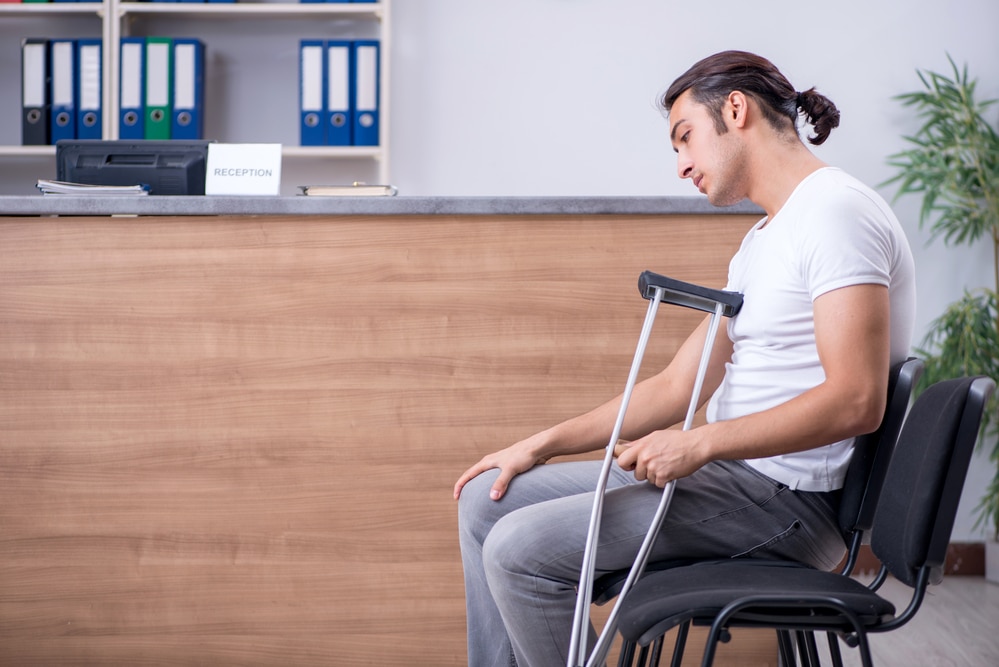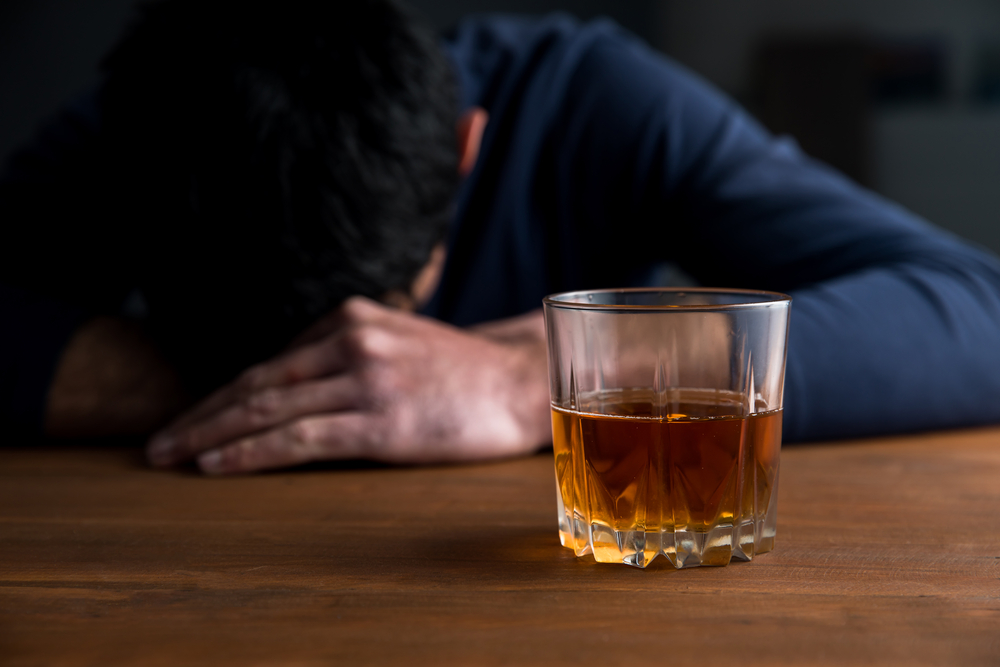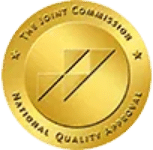
When people sustain personal injuries, they are commonly given prescription medication. Painkillers known as opioids help combat the chronic pain that often occurs as a result.
Research conducted by The National Center for Health Statistics reported that approximately 31 million people injure themselves and require some sort of medical treatment every year. This results in an estimated 214,000 deaths every three minutes.
Oftentimes, we hear of or see people developing horrible addictions from the use of opioids. The power of their ability to relieve chronic pain, even though the effects last temporarily, is what causes dependency and addiction to form.
An opioid epidemic still exists today, where the use of pain medications is skyrocketing. Data in 2018 reported that every day 128 people die as a result of overdosing on opioids. This includes heroin, as well as, pain relievers such as OxyContin (oxycodone), hydrocodone (Vicodin), codeine, morphine, and the deadly synthetic opioid fentanyl.
This is a serious national problem that not only affects public health but also social and economic welfare. The Centers for Disease Control and Prevention (CDC) has estimated that due to the abuse of prescription opioids in the United States alone, has cost the economy $78.5 billion a year.
Imagine that you incur a second condition or personal injuries of some kind and are prescribed an opioid as a way to manage your pain again. Do you, knowing how powerful opioids can be, take the prescription again? Or do you suffer the symptoms of your condition rather than risking relapse?
That is the daily struggle of millions of Americans suffering from chronic pain: get temporary relief at the cost of developing another controlling disease.
Please call our Port Saint Lucie rehab at 855-299-4472 for information on prescription drug addiction treatment.
Opioids For Personal Injuries
Opioids are synthetic painkillers prescribed to treat pain that is usually chronic or severe as well as personal injuries. Some examples of opioids are prescription OxyContin, Vicodin, and heroin. A problem with this class of drugs is that they are highly addictive and prone to causing potentially deadly overdoses.
As opioids are prescribed more and more frequently, an increasing amount of patients are becoming familiar with how addictive opioids can be. Many patients can stop taking their prescriptions at the right time but some become addicted and take to abuse. This is even after the underlying condition is no longer present.
Also, due to the expensive cost of prescription painkillers, and stricter laws on prescribing, people commonly turn to other drugs. This includes another opioid known as heroin. This is because they are easily accessible and low cost. However, fatal overdoses still occur, especially when street drugs are sometimes not pure, and are either counterfeit or laced with fentanyl.
A Hidden Epidemic

More opioids are being prescribed for pain than ever before. But most people aren’t aware of how dangerous they can be. Between 1999 and 2014, prescription opioid usage quadrupled along with opioid related-overdoses in the United States.
The reason for this is because, in the late 1990s, pharmaceutical companies reassured people with chronic pain that they would not become addicted to prescription painkillers, despite knowing the capability of their potent properties. Therefore, healthcare professionals began to prescribe opioids at increased rates. As a result, this led to widespread misuse and overdoses.
In 2012, 259 million prescriptions were written for opioids, enough at the time to give each adult their own bottle, and more opioids are being prescribed every day. While in 2014, almost 2 million Americans abused or were dependent on prescription opioids, and six out of 10 drug overdose deaths involved an opioid.
Lastly, in 2017, more than 47,000 Americans died of prescription medication-related overdoses. This proves that personal injuries are a major contributor to the disease of addiction and triggering relapse due to the use of prescription drugs.
The typical profile of prescription opioid abuse is a white woman in her 40s or older, although abuse is prevalent throughout most adult demographics. Statistical research has demonstrated that women are more likely to abuse prescription medications than men.
Cultural factors must be taken into account when looking into opioid use by area as there are nearly three times the amount of opioid patients in Midwestern and Southern states when compared to states in the Northeast or West.
Given how commonly opioids are prescribed, many former opioid patients have incurred some kind of second, painful condition, such as cancer, or had surgery, necessitating another opioid prescription since they’ve finished the first one and dealt with the initial condition. When faced with the option of taking a prescription painkiller again and rolling the dice on triggering a relapse or suffering the symptoms of their condition, many choose the latter.
How Personal Injuries Lead to Addiction
When people are harmed or injured due to the actions of others, the injured party may hold those who caused them physical and/or psychological harm accountable. For example, the driver of another car, employer, etc. This is called a personal injury claim. These claims can also be the result of someone defaming your character/reputation, or appropriating your likeness because of wrongdoing or negligence.
In other words, in order for something to be considered a personal injury, someone has to have harmed you personally in some way. These cases usually require a skilled personal injuries lawyer, and those who did the harm are legally responsible for your injuries and damages, which a majority of the time is settled with compensation.
However, even more, damage is usually done as people try and cope with their pain by taking drugs or drinking alcohol. This leads to substance dependency and abuse. Without professional help, the disease of addiction is hard to break.
Contact our Port Saint Lucie rehab to go over health insurance here!
Addicted to Sports

When you think about drugs and career athletes, steroids come to mind first, but the substances most commonly abused in professional sports are prescription opioids. In sports, opioids’ destructive powers are doubled.
Athletes, from professionals to junior varsity, are rewarded by their bodies for engaging in strenuous physical activity. This takes the form of high amounts of dopamine, the neurotransmitter associated with pleasure sensations, being released in the brain.
A similar chemical reaction can be observed when patients abuse substances such as alcohol or opioids. Due to the similarities between how the brain processes exercise and drugs, many athletes will turn to substance abuse following personal injuries in order to achieve a comparable high.
Prescription drug abuse has become a systemic problem among professional athletes due to this chemical relationship. Most of them are in the best shape of their lives so they’re always looking for something that will give them a competitive edge.
Prescription opioids and stimulants are able to provide that, either reducing sensitivity to pain or increasing energy, but these benefits come with a downside. Taking prescriptions without having a medical need for them is known to result in an increased risk of substance abuse later in life as well as other mental health issues.
“Professional athletes are always looking for something that will give them a competitive edge.”
The two categories of prescription drugs most commonly abused by professional athletes are:
Opioids
- Vicodin: Prescribed for pain in general, associated with pain from personal injuries
- OxyContin and Percocet: Used for moderate to severe pain over a long period of time
Stimulants
Adderall and Ritalin: Both substances are used to treat attention deficit hyperactivity disorder (ADHD) and narcolepsy, while these medications are also given to patients with depression, asthma, obesity, and some neurological conditions when other drugs have proven ineffective.
Triggered by personal injuries or retirement, many athletes find themselves restless and unfulfilled, unable to adjust to life without an intense physical outlet. Since they no longer have a place on the field, many will turn to drug or alcohol abuse as a way to get back to that place.
Retired NFL players abuse prescription opioids at a rate of more than four times that of the general population. Fifty-two percent of NFL retirees said that they took prescription opioids and 71 percent of them reported that they abused prescription drugs during their careers.
You Can Receive Recovery for Addiction Caused by Injuries in a Personal Injury Case
One of the most important elements of dealing with this issue is understanding how to properly calculate the value. Assessing the value of your addiction caused by an accident must consider certain elements. First, what is the cost of an addiction detox center or treatment facility?
This cost can vary depending on the geographic location of the individual. Second, what is the length of treatment that is necessary? In certain situations and depending on the addiction, some may require long-term stays. What is the likelihood of relapse? What happens if the person relapses?
Each person will have a different value depending on plenty of different factors. However, it is critical that this is added to your claim. While we see addiction issues or common in catastrophic cases, they are also common in medium to low impact collisions. This is even more so when you have long term chronic pain issues that develop.
If you have an ongoing personal injuries case where you have been injured it is important that you consider this type of recovery. While most insurance companies will attempt to block your recovery, you must seek justice to the extent of harm suffered by the negligence of another.
Behavioral Health Centers Can Help You Recover
Addiction can come at the most unexpected times, as a result of years of intense competition or prescribed to you by a trusted doctor. The best way to protect yourself from substance abuse is to find healthy ways to get your kicks and take prescriptions as directed.
What many personal injuries attorneys fail to realize is that you’re (the plaintiff) entitled to recovery for this addiction. It is probable that absent the accident, pain, and ultimate prescription to pain medication, you likely would not have developed an addiction.
If you or someone you know has a high risk for substance abuse due to personal injuries or retirement or is already abusing, Behavioral Health Centers can help. We are a comprehensive recovery center located in scenic North St. Lucie, FL, specializing in drug and alcohol dependence, mental illness, and dual diagnosis.
If you have developed an addiction to pain medication as a result of an accident or personal injuries we would like to hear from you. Please contact us today to learn more about our Port St. Lucie rehab center!
References
https://www.cdc.gov/overdose-prevention/?CDC_AAref_Val=https://www.cdc.gov/drugoverdose/deaths/prescription/index.html
https://www.cdc.gov
https://www.asam.org/docs/default-source/advocacy/opioid-addiction-disease-facts-figures.pdf
https://www.losangelespersonalinjurylawyers.co/addiction-to-prescription-opiates-following-motor-vehicle-accidents/
https://personalinjurysandiego.org/personal-injury/statistics-of-personal-injury-cases-nationwide/#:~:text=Statistics%20of%20Personal%20Injuries,year%20that%20require%20medical%20treatment.
https://www.princelawfirm.net/what-is-considered-a-personal-injury/





